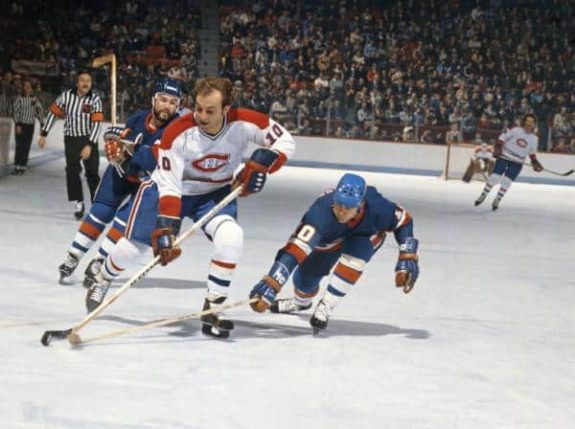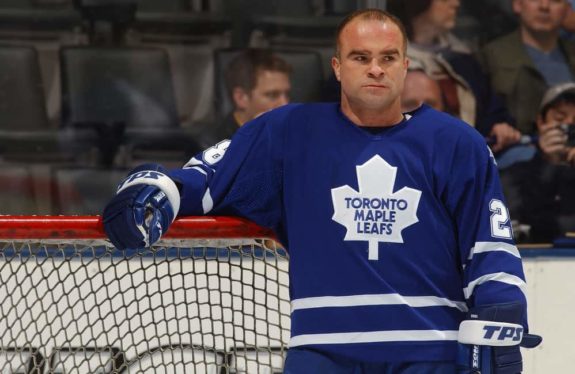It was just more than 15 years ago when I sat down with my son in our upstate New York home and was getting ready to watch an NFL game on a Sunday night. It was the first time I noticed the NBC intro that stated we were watching “Football Night in America.” My son and I looked at each other and rolled our eyes, acknowledging that NBC may have been trying to copy Canada’s “Hockey Night in Canada.” Nice try, but it has a long way to go to match the history and significance of this broadcast.
For those unaware, Hockey Night in Canada is the country’s longest-running television program and the Guinness World Record holder as the longest-running TV sports program. It was originally broadcast on the radio in Montreal and Toronto as General Motors Hockey Broadcast on Nov. 12, 1931. For some of us in the United States, we have, at times, been lucky enough to be in a place where we could get the broadcast occasionally or, for some, regularly. Watching it has developed a deep appreciation for the game and an understanding of why it has been such a mainstay in Canada.
Experiencing Hockey Night in Canada Growing Up
Sometime in the early 1970s, I was on a trip to northern Wisconsin. On this late fall Saturday night, we decided to see what was on TV, and the choices were limited. In the early 1970s, Cable TV was in its infancy, and the vast majority of North Americans received their TV signal through an antenna. This meant that in rural Wisconsin, your choices were very limited. Thankfully, we could pull in a somewhat grainy but watchable game from Hockey Night in Canada, which saved us from the choices of doing nothing or watching an episode of Lawrence Welk. What made this even better was that the game was my Chicago Blackhawks against the Montreal Canadiens, as being able to watch a Blackhawks game on TV was a very rare occurrence.

It was explained to me later that getting the signal and watching the broadcast was a big deal there and a very big deal in Canada. This was later confirmed in the 1972 book The Death of Hockey. Bruce Kidd and John Macfarlane wrote, “Hockey Night in Canada really is hockey night in Canada. We schedule our lives around it.” It was at this time a seed was planted that led to a profound appreciation of Canada’s love of the game and Hockey Night in Canada.
Throughout the years, I was fortunate to be able to watch HNIC on occasion. In the 1980s, I was again fortunate enough to have college buddies who loved hockey and had satellite dishes. These were not the dishes you see today mounted on the side of houses. These were very large dishes, and if you saw them today, you might conclude that the person who owned this worked for NASA or was searching for intelligent life outside of our solar system. As long as you could find the signal, you could get a variety of stations across North America, which included those who broadcasted HNIC. Not only was it just broadcasting hockey, but there seemed to be more passion for covering the game than was experienced in the States.
Experiencing Hockey Night in Canada, While Visiting Canada
In 1999, a Montreal hotel near the Molson Centre advertised a special in our local Syracuse, N.Y., newspapers. The special was that if you rented a room during a certain weekend, you would receive a pair of tickets to a Canadian game. Having never been to Montreal, we decided a trip was in order, with my 6-year-old son attending the game while my wife and daughter chose to sightsee. We selected the last game of the season, which was between the Canadiens and the Toronto Maple Leafs. Knowing that the Canadiens were in last place while the Maple Leafs were heading to the playoffs, I expected a somewhat low-key game. Of course, I was dead wrong.
With a crowd that was already raucous and ready for the rivalry game, Tie Domi of the Maple Leafs helped the already charged atmosphere by picking up an early double-minor roughing penalty. Midway through the game, a local, who recognized us as Americans, explained that even in rivalry games like this, he believed there was just a little extra energy in the stands on Saturday nights, thanks partly to HNIC. Before writing this article, I asked my son what he remembered about the game, and he said, “I couldn’t believe how wild it was in the stands.” Yes, Saturday nights in Canada are truly hockey nights in Canada.

I have also had the pleasure of watching HNIC in local Canadian establishments. Growing up, my son had played travel hockey, which allowed us to travel on weekends to tournaments in Canada. It was always a given that for dinner on Saturday night, most of the players and their parents would attend a place with television, which meant the HNIC was on. The interesting thing about that is that, unlike what we see a lot with American pro sports, there were many people who were fans from various teams and not just the one or two Canadian teams that were playing. Of course, the Canadian team or teams that were playing were well represented, but many were just hockey fans. Once again reinforcing Kidd and Macfarlane’s writing that “We schedule our lives around it.”
It was somewhat discerning to find out that HNIC numbers from the last 15 years are down from their peak. There are a few reasons for that, but the main reason is that in our world, there are so many other options for people to occupy their free time with. Gone are the days when we had just a few channels to select from. Today, we have cable with hundreds of channels, streaming services, and other electronic devices that may draw the slightly casual viewer away from HNIC. In reality, that is their loss. What they are losing is something that some of us in America wish would happen: HNIC connects everyone from coast to coast. Many of us have had the pleasure of and are extremely grateful to be a part of this wonderful Canadian historical treasure.
